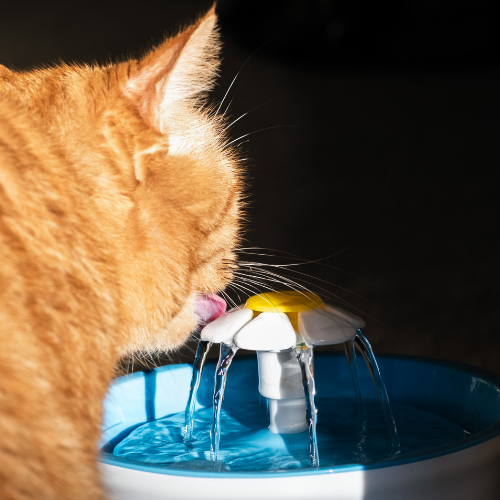
Understanding Diabetes in Pets
There are two broad forms of diabetes in animals — diabetes insipidus (a rare water-balance disorder) and diabetes mellitus (a sugar-regulation disorder). The condition seen in dogs and cats almost always belongs to the second group: diabetes mellitus.
Diabetes mellitus develops when the body cannot use glucose properly because insulin is too low or not working as it should. Sugar stays in the bloodstream instead of entering cells for energy. As glucose accumulates it affects multiple organs — kidneys, liver, eyes, nerves and the brain. In cats, diabetes may also show as behaviour change; sudden drops in glucose (hypoglycaemia) can lead to confusion or sudden unexpected aggression.
How it appears in dogs vs cats
In dogs, diabetes is most often insulin-dependent. It is more frequent in middle-aged females and is strongly influenced by hormones; unspayed females have a higher risk due to progesterone-driven insulin resistance, which is why spaying can be protective. Certain breeds such as Miniature Poodles, Schnauzers and Beagles are predisposed.
In cats, diabetes is commonly linked to body weight and inactivity and tends to be insulin-resistant. Some cats can achieve remission if treated early and lifestyle is corrected.
Typical early signs
• Increased drinking and urination
• Weight loss despite good appetite
• Lethargy or weakness
• Recurrent infections (skin, urine, gums)
• Neurologic or behaviour change (wobbliness, “bear-footed” stance, sudden aggression in hypoglycaemia)
Untreated diabetes can progress to diabetic ketoacidosis — a life-threatening emergency.
Diagnosis and management
Diagnosis is confirmed with blood and urine testing.
Once confirmed, care is built step-wise — starting with what can be corrected safely at home before medication is escalated.
Core pillars of management
• Diet correction — veterinary-formulated or high-fibre diet to stabilise glucose
• Weight reduction and controlled feeding — particularly important in cats
• Gentle, regular activity — improves insulin sensitivity and reduces peaks
• Regular glucose monitoring — at home plus periodic glucose curves to avoid hidden surprises
• Insulin therapy — added when lifestyle correction is insufficient or required from the start based on results
At ABVC we train owners in diet planning, weight control, monitoring and when needed, correct insulin administration and recognition of low-glucose signs at home.
Weight and prevention
Excess weight is one of the strongest drivers of diabetes. Portion control, gradual weight loss and daily movement are medical prevention, not cosmetic advice.
Frequently asked
How do I know if my pet is diabetic?
Look for increased drinking/urinating, weight loss, dullness or behavioural change — only a vet can confirm.
Is diabetes curable?
Usually not, but with structured care pets can live long, stable and comfortable lives. Some cats treated early may achieve remission.
How often is insulin needed?
Typically once or twice daily as directed after a glucose curve.
A diabetes diagnosis is not the end of good life — it is the beginning of correct, structured care. With the right plan and monitoring, diabetic pets can do very well for many years.
CONTACT US TO BOOK AN APPOINTMENT
Email frontdesk@abvc.ae
Call 04-3408601
WhatsApp 050-3440987
